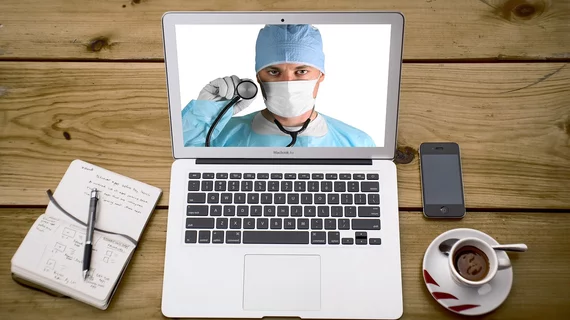X-ray results suggest telehealth may be a bad fit for treating musculoskeletal conditions
The adoption of telemedicine can reduce the cost of care delivery. According to a new study published in The Journal of the American Board of Family Medicine, it may also lead to unnecessary medical imaging exams.[1]
Researchers with the University of South Florida (USF) aimed to assess the outcomes of musculoskeletal radiographs ordered during both in-person and televisit primary care appointments. The findings could have important implications for patient care and the economic impact of telehealth, particularly in the context of the COVID-19 pandemic.
According to the team's analysis, musculoskeletal radiographs ordered during telemedicine appointments have a higher likelihood of showing normal results compared to those ordered during in-person primary care visits. The results come after researchers conducted a retrospective data study, analyzing imaging orders placed between April 2019 and March 2021 at a major academic health system. A total of 1,580 radiograph orders were analyzed from 995 unique patients.
Researchers also conducted a qualitative review of results for patients who underwent multiple radiographs. Of these, 72 pairs of radiographs either overlapped anatomic sites or were of the same site at separate times. The majority of these pairs (67) were ordered at in-person appointments, and 49 of them had concordant abnormal results.
Where is the expected cost savings of telemedicine?
The study raised concerns about the economic impact of telemedicine for musculoskeletal conditions. It suggested that unnecessary radiography ordered during telemedicine visits could increase healthcare costs, potentially mitigating any savings achieved through televisits.
“In an age mindful of cost and resource utilization, we should also consider the economic impact of primary care televisits for musculoskeletal conditions,” wrote lead author John Petrilli, MD, with the department of family medicine at USF's Morsani College of Medicine, and colleagues. “Prior studies exploring health systems and societal costs of orthopedic televisits did not specifically consider the cost of imaging; they either ignored imaging or assumed costs were similar for televisits. Our study’s findings challenge this assumption. Telemedicine does not routinely reduce the cost of health care, largely due to the costs associated with technology upkeep and maintenance.”
According to the authors, these findings indicate that while telehealth offers convenience and accessibility for primary care visits, televisits may not be appropriate for some musculoskeletal conditions. Further research and guidelines may be necessary to optimize the use of telemedicine for musculoskeletal assessments.

